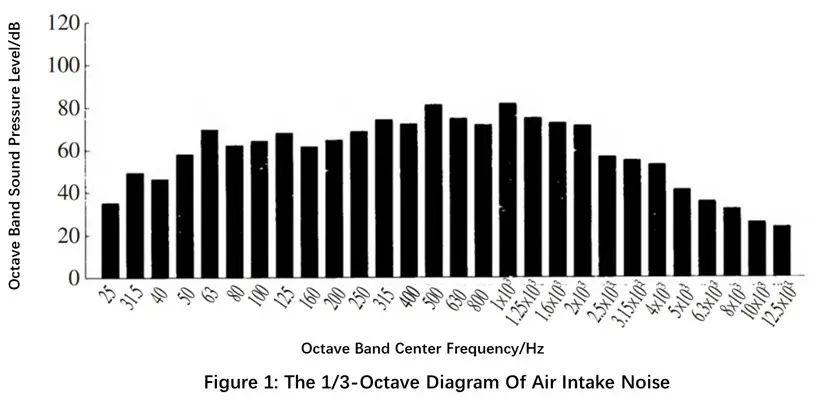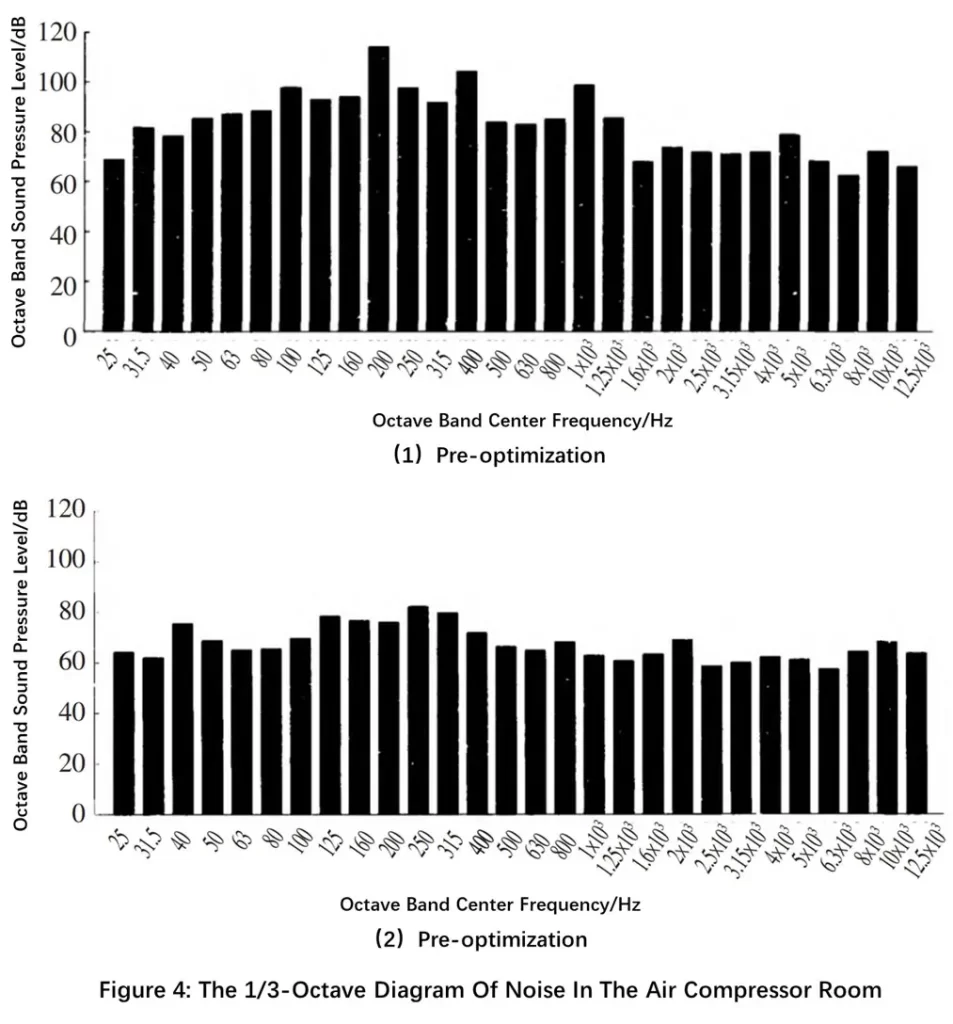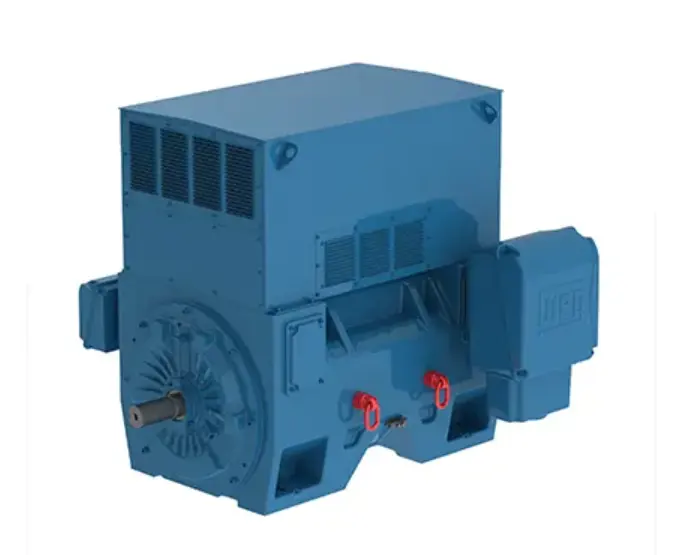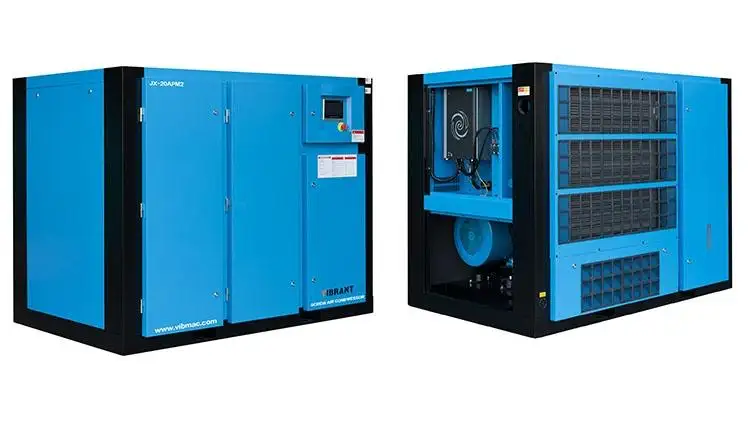
As a kind of general power equipment, air compressor is widely used, among which, screw air compressor is often used in the fields of iron and steel, electric power, metallurgy, shipbuilding, textile, electronics, chemical industry, petroleum, mining, light industry, machinery manufacturing, papermaking and printing, transportation facilities, food and medicine, casting and spraying, shipping terminals, military science and technology, automotive industry, aerospace, infrastructure, etc. Noise Control of Screw Air Compressor complete the compression of gas through the rotation of rotor, which changes the volume between teeth.
The whole working process is briefly simple. Inside the screw compressor body, there is a pair of parallel arranged and simultaneously meshed screws doing rotary motion. Yin and Yang rotor to drive the inlet air rotation, and then compressed volume changes, mainly contains 4 processes:suction process, compression process, compressed gas and oil injection process, as well as the exhaust process.
As the screw machine will produce a lot of noise in operation, the noise decibel is usually in the range of 70 to 110dB.Moreover, it is mainly dominated by low-frequency pulsating noise, which spreads far away, has a large impact and involves a wide range of areas, and brings great trouble to people. In order to reduce the noise effectively, our company controls the Noise Control of Screw Air Compressor by installing mufflers and soundproof enclosures to enhance the reliability of screw air compressor work.
1. Noise control mechanism
The sources of Noise Control of Screw Air Compressor include mechanical, aerodynamic and electric motor. Among them, mechanical noise is caused by wear and tear, friction and uneven force transmission between institutions; aerodynamic noise, during operation, is caused by the continuous communication and cutting off of air intake and exhaust orifices and working volume; motor noise mainly includes ventilation, mechanical and electromagnetic noise.
Noise control paths are divided into 3 categories: control at the sound source, control at the sound wave propagation path, and control at the sound reception. In order to effectively control the noise of screw compressors, it is necessary to do so from two aspects: mechanical and aerodynamic noise.
- Acoustic control. Acoustic noise reduction is to add sound-absorbing materials to the room to enhance the average sound absorption coefficient of the room in order to reduce the reverberation sound energy density and reduce the total sound pressure level.
- Sound insulation control. Sound insulation control is the ability to block the propagation of sound energy when sound waves travel through the air. Commonly used sound insulation materials include acoustic booths, acoustic enclosures and sound barriers.
- Muffler control. Muffler can control aerodynamic noise, usually installed and used in the airflow inlet & outlet of the equipment and airflow channel, can effectively reduce and prevent the noise from spreading to the outside.
2. Noise control and effect
2.1 Installation of mufflers
The proportion of air inlet noise in the overall noise of air compressor is larger, to reduce the noise of air compressor, it is necessary to manage the air inlet noise first. Muffler is a device that can reduce aerodynamic noise, which is usually installed on the airflow channel of aerodynamic equipment or in the air intake and exhaust system, allowing airflow to pass through and blocking the propagation of acoustic wave, which has a good effect on controlling aerodynamic noise.
In order to get pure noise at the air inlet, our company uses high-efficiency sound insulation boards at the body and air inlet of the screw air compressor, the material is a composite structure of suction-insulation-suction, which can effectively separate the mechanical noise of the body and the noise of the airflow. Figure 1 shows the 1/3-octave diagram of the noise at the air inlet of a screw air compressor.

As can be seen from Figure 1, the noise of the screw compressor is continuously distributed from 25 to 12,500 Hz; the noise is mainly of low and medium frequency, with obvious pulsation phenomenon, and the high-frequency component is less than 15% of the whole energy; the noise equivalent A sound level is 98dB.
In order to further reduce the noise, we have designed a new type of muffler with double-inserted expansion., which can effectively widen the noise reduction band and reduce the pulsation noise, and the muffler is a double resonance cavity, which can increase the muffling volume in the adjacent frequency band while increasing the absorption peak value of the frequency band. Figure 2 shows the 1/3 octave diagram of the improved muffler.

As can be seen from Figure 2, after installing this muffler, the low-frequency part has higher anechoic characteristics, which is due to the optimization of the resonance cavity of the resonant muffler, the anechoic performance on the frequency of 63~160Hz is improved. At the same time, it can also significantly improve the muffling characteristics of the mid-frequency part, and the optimized muffler resistive part improves about 2 dB in the mid-frequency band.In addition, it slightly improves the muffling characteristics of the high-frequency part, and because most of the muffler resistive part is in the geometric mid-range position, it can improve the muffling performance of the mid-frequency and weaken the ability to influence the high-frequency noise, and it has obvious effect on the noise control.
2.2 Installation of noise enclosure
In view of the wide frequency characteristics of the noise, our company reduces the noise by installing an acoustic enclosure with a broadband impedance composite sound absorption structure. The perforated plate of the acoustic enclosure has a good effect on the absorption of low and medium frequencies, and by applying the Helmholtz resonance structure, the absorption coefficient of a specific frequency band can be increased. Therefore, according to the noise characteristics, it is necessary to increase the absorption coefficient to 1000 Hz. We control the perforation rate and aperture to control the resonance frequency at 1000 Hz, and fills the perforated plate with glass wool behind the perforation, and then adds metal damping plate to protect and isolate the sound. Figure 3 shows the sectional view of the acoustic enclosure.

During operation, the air compressor generates a lot of heat, which needs to be dissipated in time when it is covered with an acoustic enclosure. In order to meet the actual production, the acoustic enclosure is required not only to ventilate and dissipate heat, but also to reduce the sound leakage from the heat dissipation holes. Therefore, when an axial fan is installed on the top of the screw air compressor to dissipate heat, the heat dissipation is:

Where: Q is the heat dissipation (m3/h); α is the heat dissipation coefficient, take 0.01-0.5; N is the power (kW); Δt is the difference in temperature between the air inside and outside of the acoustic enclosure; r is the air capacity , take 1.2 kg/m3. In order to effectively eliminate the sound leakage phenomenon of the heat dissipation holes, it is also necessary to install resistive mufflers at the air inlet and outlet of the air compressor. After installing the soundproof enclosure, the noise signal of the machine room is collected and spectral analysis is performed, and the noise spectrum before and after the optimization is compared and studied, as shown in Figure 4.

From Fig. 4(a), it can be seen that the Noise Control of Screw Air Compressor of the unit before optimization has significant broadband characteristics, and it is more obvious in the middle and low frequencies, in which, the sound pressure level at 200 Hz has reached 120 dB, and there are also very high sound pressure levels at 400 Hz and 1000 Hz.
As can be seen in Fig. 4(b), the sound pressure level at each frequency is obviously reduced significantly after optimization, with no prominent peaks at 200 Hz, 400 Hz and 1000 Hz, and the noise reduction effect in the middle and low frequency bands is very significant. In addition, the average sound pressure level of noise inside the acoustic enclosure is 94 dB, which effectively controls the noise and basically achieves the expected effect.
Concluding Remarks: Noise Control of Screw Air Compressor
Our company analyzes the commonly used noise control methods and proposes the measures of installing mufflers and soundproof enclosures. After installing a new type of muffler with double-inserted expansion, the muffling characteristics of the screw air compressor in the low frequency, middle frequency and high frequency parts are improved, and the muffling performance in the middle frequency is improved by about 2 dB; and after installing an acoustic enclosure with a broadband impedance composite sound absorption structure, the sound pressure level of each frequency is reduced significantly. Also read.








